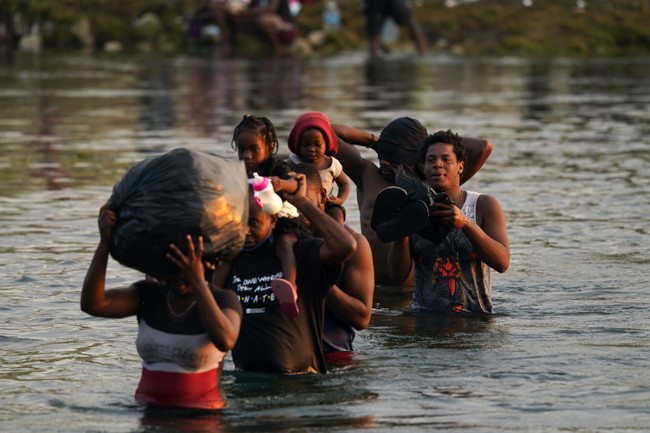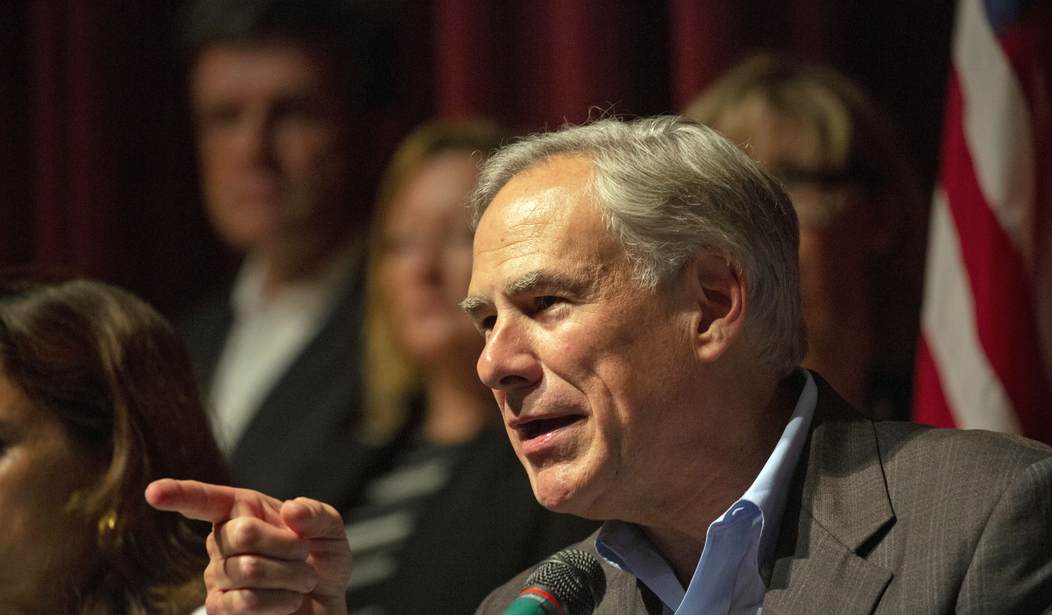The Republican governor of Texas vowed today to appeal a federal judge’s order that the state remove the 1,000-foot line of connected buoys the governor ordered placed in the Rio Grande River near Eagle Pass to deter illegal border crossings from Mexico.
“Texas will appeal,” said Gov. Greg Abbott in a statement posted on his official website:
Today’s court decision merely prolongs President Biden’s willful refusal to acknowledge Texas is rightfully stepping up to do the job that he should have been doing all along. This ruling is incorrect and will be overturned on appeal.
We will continue to utilize every strategy to secure the border, including deploying Texas National Guard soldiers and Department of Public Safety troopers and installing strategic barriers.
Our battle to defend Texas’ sovereign authority to protect lives from the chaos caused by President Biden’s open border policies has only begun. Texas is prepared to take this fight all the way to the U.S. Supreme Court.
A federal judge in Austin Wednesday ordered Texas to remove the chain of buoys at the state’s expense in a ruling in favor of the Department of Justice, who filed a lawsuit against the buoys.
Senior Judge David Alan Ezra ordered Texas, absent a Fifth District Appeals Court modification, to remove the marine floating barriers, including all buoys, anchors, and accessory materials, by Sept. 15, in coordination with the Army Corps of Engineers.
Ezra ruled that the barriers were a threat to human life because of the treacherous conditions the migrants face in this stretch of river, such as hidden eddies that can and do drown swimmers, and because the barriers are a hazard to navigation in waters where the federal government has jurisdiction.
“The harm to navigation is clearly evident from the evidence presented, while the State of Texas did not present any credible evidence that the buoy barrier as installed has significantly curtailed illegal immigration across the Rio Grande River,” he said.
The judge wrote that he expected the removal to be quick and easy to accomplish:
With respect to the buoy barrier that is currently in place, this is a Preliminary Injunction and not a final disposition of this case on the full merits, so this Court is counseled to act in a measured way. As a result, the Court is directing that the buoy barrier be moved from the main waters of the Rio Grande River to the riverbank rather than removal entirely from the river so that the barrier does not impede or impair in any way navigation by airboats or other shallow draft craft along the Rio Grande River.
Abbott first announced the marine barrier program at a June 8 press conference, where he said the goal was to deter illegal crossings in hotspots along the Rio Grande River.
The governor said this strategy will proactively prevent illegal crossings between ports of entry by making it more difficult to cross the Rio Grande and reach the Texas side of the southern border. The first 1,000 feet of the marine floating barrier was to be deployed near Eagle Pass.
The barriers are part of Operation Lone Star's larger program, which mobilizes law enforcement and Texas National Guardsmen to secure the Texas border with Mexico.
The Adjutant General of Texas, Maj. Gen. Thomas Suelzer, who leads the Texas Military Department, praised the governor’s attention to the border.
“Texas is extremely fortunate to have a governor who is absolutely relentless in his actions to protect our state's sovereignty, secure our border, and preserve the rule of law,” the general said.
“The legislators behind me passed comprehensive laws to secure the Texas-Mexico border, and I applaud all of them for their work on this important issue,” he said.
Texas DPS officer praises marine barriers set in Rio Grande River

In a July 14 press release, the governor said he was pleased with the effectiveness of the chain of buoys combined with the placement of concertina wire, which was diverting migrant foot traffic to other states.
“We now have buoys in the water to prevent people from even crossing the middle part of the Rio Grande River and coming into the state of Texas,” the governor said.
“Because Texas has done such a prolific job of stopping people from coming into our state, you are seeing a massive increase in the number of people crossing into New Mexico, Arizona, and California.”
Texas Department of Public Safety Lt. Chris Olivarez said in the same release that Texas was taking action with the buoys because the federal government stood down from its responsibility to secure the border with Mexico.
“This really shows the State of Texas continues to take unprecedented action in the absence of the federal government to secure the border,” the lieutenant said.
“The governor has done far more than any governor as far as securing the border
“We continue to look for ways and infrastructure to secure the border to prevent people from crossings between the ports of entry because that's still taking place, and the river is very dangerous.”
Olivarez said there is a structure and procedure for entering Texas, so the barriers should not be an issue.
“There is no reason why anybody should want to cross that river,” he added.
“They should go to the port of entry where it's safe, where it's humane, where they can seek asylum, as opposed to risking their life crossing the river.”














Join the conversation as a VIP Member